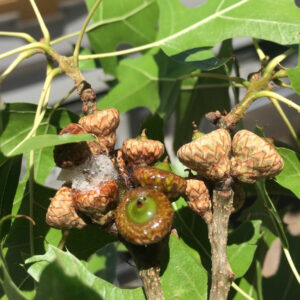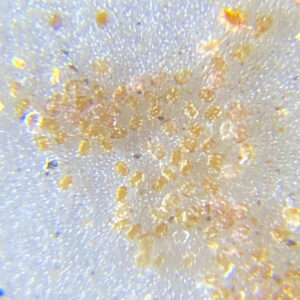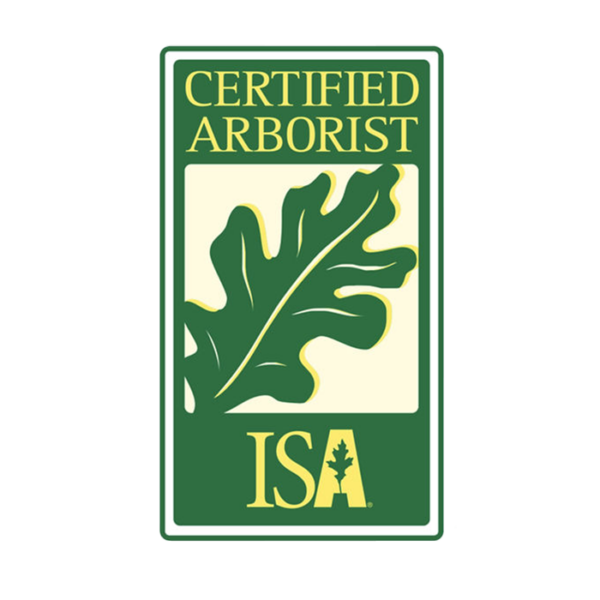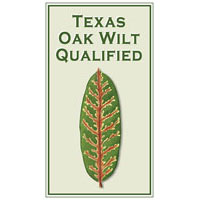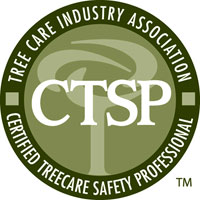This summer there has been an outbreak of drippy nut disease and obscure scale affecting many West Texas trees, primarily Red and Live Oaks. In some cases, these outbreaks have simply resulted in messy areas underneath the trees themselves. In other cases, they have caused significant stress and aesthetic damage. Here is an overview of what to look for on the trees around your property.
Drippy Nut Disease
The easiest way to identify this disease is to look for a brownish fluid that resembles sap emerging from acorns on an oak tree or dripping from the twigs and leaves on the tree. This fluid is produced when small insects inflict several wounds on the tree, transferring a bacterial infection that creates the brown sap-like ooze. While the dripping will generally only last for a few weeks, it can cause some messiness to surfaces or objects located underneath the oak tree.
It is not thought that the insects and bacteria which cause drippy nut disease will lead to degraded health for your oak trees, but the wounds they inflict on the tree can make it more vulnerable to other kinds of infection or pests. That’s why it’s always best to reduce as much stress as possible for your trees through proper fertilization, watering, and pest control practices to avoid long-term damage.
Obscure Scale
While obscure scale primarily affects landscape oak trees, it can certainly affect other species of West Texas trees. The scale insects themselves have piercing, sucking mouthparts capable of penetrating bark and sucking the sap from a tree. They live on the twigs and branches of a tree, and their young hatch in the same spots, quickly leading to the possibility of severe infestations on a given tree. Once these scale insects begin feeding on a tree, they can severely weaken the tree, especially if they are present in significant numbers.
Left untreated, a significant population of obscure scale can infest a tree, dramatically altering its health and aesthetic value. The main issues resulting from an infestation can be premature leaf drop and small twig die-back. They can also weaken the tree to the point where other diseases and pests can inflict additional damage to the tree. In a worst-case scenario, the damage done to a previously healthy tree can cause it to become so weakened that it may die completely.
Contact Us
Don’t wait until you see signs of disease or pests impacting the health of trees on your property; contact an ISA Certified Arborist at Hildebrandt Tree Tech in Lubbock, TX today. We’ll be able to identify any pests and diseases, work with you on a plan to save your trees, and help them thrive for years to come.


